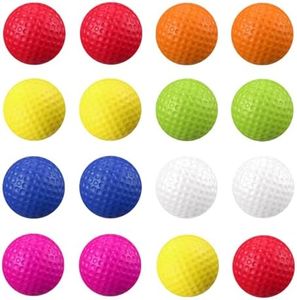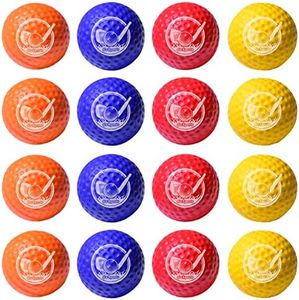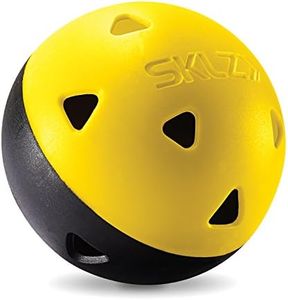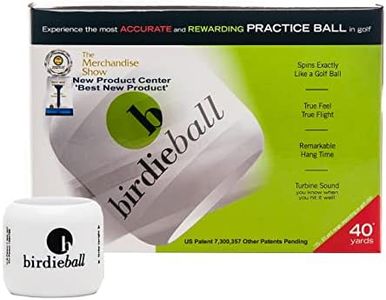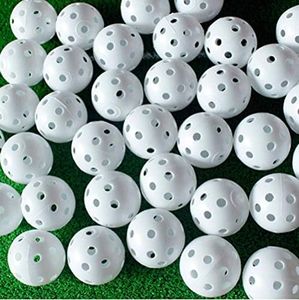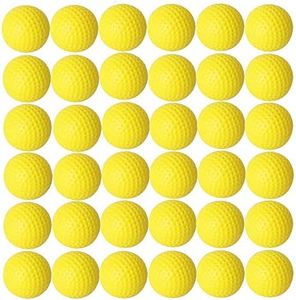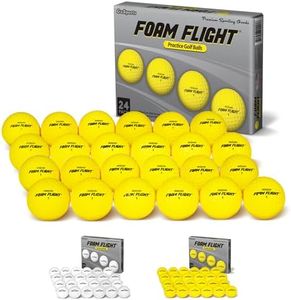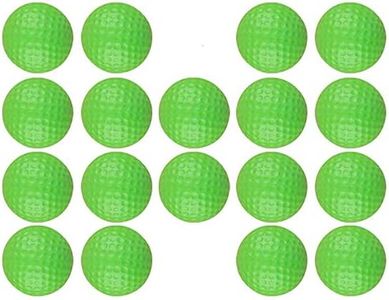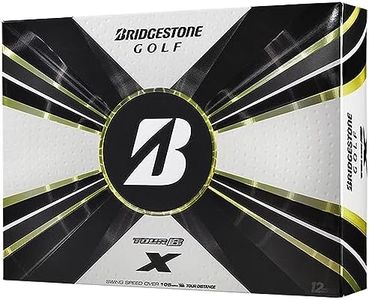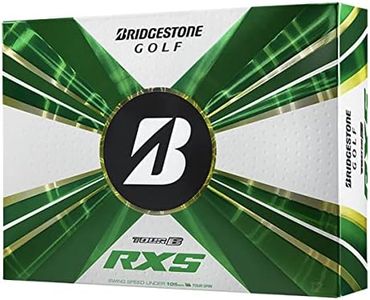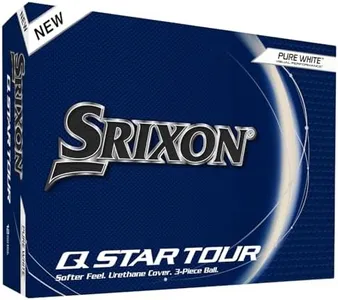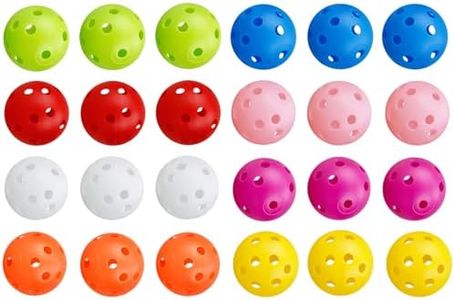We Use CookiesWe use cookies to enhance the security, performance,
functionality and for analytical and promotional activities. By continuing to browse this site you
are agreeing to our privacy policy
10 Best Golf Practice Balls
From leading brands and best sellers available on the web.By clicking on a link to a third party's website, log data is shared with that third party.
Buying Guide for the Best Golf Practice Balls
Choosing the right golf practice balls is important because they can affect how you train, your convenience, and the safety of your practice area. Golf practice balls are designed to mimic the performance of real golf balls while being safer and more versatile, letting you practice in various locations, including indoors, outdoors, or in limited spaces. When buying, consider your practice setting, how realistic you want the feedback to be, and any specific training goals you have. Understanding the different specifications will help you match a practice ball to your needs, making your practice sessions more effective and enjoyable.MaterialThe material of golf practice balls affects how they behave, their durability, and their safety. Plastic balls are lightweight and safe to use in small spaces or indoors because they do not travel far or cause damage, but they often feel and react differently from real golf balls. Foam balls provide a more realistic feel and flight, compressing more like real balls upon impact, making them better for practicing your swing mechanics. Rubber or specialty materials might combine durability and a closer imitation of real golf ball behavior. Choose plastic balls if safety and space are the main concerns; opt for foam for a more realistic practice experience, especially if you’re working on swing feel and feedback.
Flight DistanceFlight distance refers to how far the practice ball can travel when hit, which depends on its weight, material, and design. Low-flight balls are great for small yards or indoor practice because they limit distance and reduce the risk of breaking windows or injuring others. Medium-flight balls may go farther but still don’t reach the full distance of a regular golf ball, suitable for mid-size outdoor spaces or net practice. Maximum-flight practice balls closely mimic the flight distance of real golf balls and are best used when you have access to a driving range or plenty of open space. Pick a ball type based on the amount of space you have and how closely you want to simulate real on-course performance.
DurabilityDurability is about how long the practice balls will last before they show wear or break. This depends on the material and quality of manufacturing. Basic plastic balls may crack or split after repeated use, especially with powerful swings. Foam and higher-quality materials tend to last longer even with heavy practice. If you practice often or hit with a lot of force, look for durable balls for longevity; for occasional light practice, standard balls may be sufficient.
Feel and FeedbackFeel and feedback refer to how much the practice ball replicates the feel of hitting a real ball and the information it gives you about your swing. Some balls, especially foam ones, compress and respond more like real golf balls, letting you judge the quality of your strike, the direction, and ball flight. Plastic balls often bounce or spin unrealistically, giving limited feedback. Prioritize realistic feel and feedback if you're working on improving your golf technique; otherwise, choose convenience when working with restricted space or younger players.
VisibilityVisibility is about how easy it is to see and find the practice balls, especially when practicing outdoors. Brightly colored or uniquely patterned balls are easier to locate in grass, bushes, or low light conditions, saving time and effort during retrieval. If you practice in areas where losing balls is common, choose highly visible balls to make your sessions smoother.

